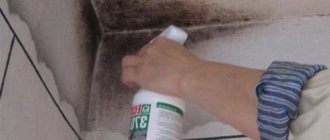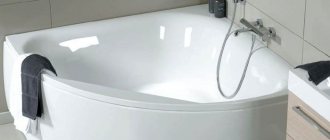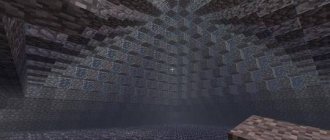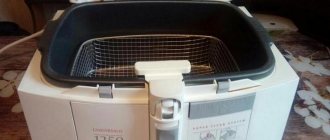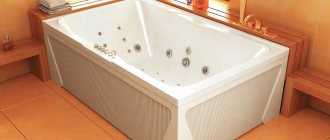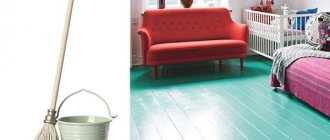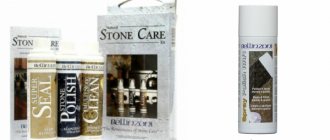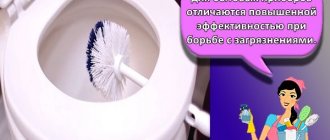Among the types of ceiling design that are widely used today during apartment renovations, stretch ceilings are of greatest interest. Despite all the relatively complex and labor-intensive installation technology, this design option for ceiling surfaces is the most original. Thanks to the wide variety of colors and textures, such stretch ceilings can radically change the interior of even the most ordinary-looking room. Sophistication, gloss and presentability are the main qualities that are characteristic of this type of ceiling design.
However, it is not enough to install a tension suspension structure. It is important to know how to clean stretched fabric. This requires regular maintenance of stretch ceilings so that they continue to please you for years to come.
What is the secret to caring for such attractive and delicate structures? When should you wash, what and what detergents are best for hanging tensioned systems? Let's try to answer these questions.
What are the features and specifics of suspended ceilings?
The canvas that is stretched in the upper part of the room is a material unique in its technological and physical properties. It simultaneously combines high technological characteristics, practicality and aesthetics. New stretch ceilings installed in the hall or living room always look great. They can be glossy or matte. In both cases, the surface of the PVC film is even and smooth.
Note: there is a misconception that film stretched onto ceilings does not require maintenance. Like any other surface mounted on the top, the film is subject to natural physical contamination during operation.
Dust and human waste products, along with fumes, settle on the surface of the ceiling, over time depriving it of its freshness and attractiveness. The situation with suspended ceilings looks similar. This is especially true in situations when we are dealing with glossy ceiling tension structures. Caring for matte stretch ceilings is much easier than with a glossy texture. The reason for such attention to this type of tension systems is that the glossy texture of PVC film is more susceptible to contamination and, accordingly, this texture requires special cleaning and washing technology.
Polyvinyl chloride film or polyester fabric is a special finishing material. Due to its strength and resistance to external influences, the fabric stretched in the upper part of the premises can serve for a long time. Under one condition, that care is carried out on time and correctly.
When to wash and clean tensioned suspension systems
When the ceiling is washed, it is immediately noticeable. The glossy surface plays with colors and tints, reflecting the light of the switched on lamps. The clean, matte surface diffuses light better, increasing indoor comfort.
However, the condition of the ceilings is greatly affected by the level and intensity of use of the room. Pollution is especially noticeable in the kitchen or in those areas where people most often stay. In such places, cleaning of the suspended structure is required at least 1-2 times a year. In the living room or in the hall, this procedure is performed less frequently.
For reference: it’s worth focusing specifically on the children’s room. In a child's bedroom or playroom, where the child spends most of his time, wet cleaning of ceilings, including tension systems, is carried out at least once a month.
Also, the condition of the ceiling surface made of PVC film is influenced by the quality of the material. Branded stretch ceilings will retain their original virgin appearance longer. During operation, such canvases and fabrics are treated with special compounds and agents that reduce the degree of contamination of the film or fabric.
In order to achieve the desired effect, I wash the suspended ceiling, observing certain rules, subtleties and nuances.
How and with what means should you wash suspended ceilings at home?
Wash your stretched fabric incorrectly can ruin all the beauty you used to enjoy. Failure to comply with care technology often causes the main fabric to lose its original color. The tension surface will lose its shine and become cloudy. Often, excessive zeal and violation of the rules for caring for ceilings of this type cause deformation of the stretched fabric.
If caring for a matte ceiling can be carried out with some disturbances and will not lead to significant changes in appearance, then with a glossy surface everything is much more complicated. What basic rules should you know:
- Use only substances and detergents that do not contain abrasive elements for washing;
- soda and powdered substances are not suitable for such a procedure;
- substances and components containing alkalis and acids are also contraindicated when cleaning tension systems.
Cleaning and cleaning products must be selected accordingly. No scrapers, spatulas or stiff bristled brushes. Only soft foam sponges, brushes and microfiber sponges are used.
Note: cleaning PVC film can be wet or dry. The choice depends on the degree of contamination of the ceiling part and operating conditions.
Dry cleaning and cleaning is carried out with soft cloths. The stretched fabric is rubbed in a circular motion without pressure. This technique will allow you to update your work surface without streaks, making it still bright and catchy. When wet processing, the same procedure is performed with a sponge. To achieve better results, you can add detergent to the water that does not contain aggressive components.
It is worth remembering that the more often you wash your ceilings in the house, the longer they will retain their attractiveness. Regular washing and cleaning will avoid the accumulation of dirt and dust, the washing of which will be very difficult.
Caring for glossy ceiling surfaces
Glossy ceilings have a shiny surface, and when it remains that way, this is the best confirmation of its cleanliness. If there is very little dust, then maintenance is as simple as possible - you need to carefully rub a dry cloth over the glossy surface until it shines again. Did you still have to wash the glossy ceiling? It turns out that this can be done with an ordinary window cleaner, as well as using special polishes that help restore the natural shine. The oldest and simplest way is to add half a glass of ammonia to a liter of water and wipe the ceiling with this solution. True, ammonia vapors are harmful, so you will have to work in a respirator. Whatever cleaning agent you try to wash the ceiling, do not make circular movements, otherwise there is a high probability that stains will remain on the surface of the material. Simply move the cloth soaked in the solution back and forth until the dirt disappears.
What is the secret of proper washing and cleaning of suspended ceilings?
To make the whole process as comfortable and very tiring for you as possible, acquire the following devices:
- ladder - stepladder;
- microfiber or suede cloths;
- foam sponges;
- vacuum cleaner;
- detergents suitable for this procedure.
To remove dust with a vacuum cleaner, use a brush attachment with soft bristles.
For example, to remove minor dirt, stains and dust from the ceiling surface, it is enough to wipe the surface of the film with a damp cloth or suede cloth.
After treating the fabric with a damp sponge, it is necessary to treat the surface with dry material. This must be done to ensure that no traces of dried drops remain on the glossy surface. A matte stretch ceiling does not require such careful care. Here it is enough to get by with just one wet cleaning.
When it comes to major cleaning and you need to remove heavy dirt that is clearly visible on the stretched fabric.
Note: when working with a vacuum cleaner, you should not rush into work too zealously. Using fairly gentle movements, without touching the surface, run the vacuum cleaner over the entire ceiling. Too much pressure on the fabric can lead to accidental mechanical damage or sagging of the entire structure.
Individual stains (traces from food and drinks) are removed with a sponge or microfiber cloth soaked in soapy water. If the first attempt is unsuccessful, if the stain remains, repeat the procedure two or three times without resorting to radical actions. To make the glossy surface shine again, wipe the stretched film with a lint-free cloth soaked in 10% ammonia solutions. Sometimes for these purposes they use a special means for washing windows and mirrors, spraying it not on the film, but only by moistening the surface of the napkin.
For work, washing powder diluted in warm water is usually used. There is no point in making a highly concentrated soap solution. Otherwise, you will have to spend more time removing soap film and foam from the treated area. To be on the safe side, try making a soap solution from regular laundry soap first. You should remember those tools that are strictly not recommended to be used in such situations.
Important! It is strictly forbidden to use detergents containing abrasive elements, solvents of all types and classes to treat ceilings made of PVC films. Specialized special equipment usually indicates the scope of application, including cleaning and washing suspended ceilings.
When using a new product, you need to test its effect in a limited area, somewhere inconspicuous to the eye. If the product does not leave noticeable stains or streaks, use it as directed on the entire ceiling surface.
It is not worth overpaying when purchasing special products, since its composition is a regular washing solution, which contains special fragrances and additives.
Cleaning sequence
Before washing the suspended ceiling, it must be cleaned of dust that can scratch it with a detergent. After this, if the covering is made of slats or PVC panels, you can create a warm and humid environment in the room. The condensation collected on the lining will soften and soak away all mud deposits.
Further work is carried out as follows:
- the ceiling plane is completely wetted with warm water with detergent dissolved in it;
- the entire surface area is rubbed with cloth or foam rubber;
- until the foam has dried, the surface is washed with clean water;
- dry foam rubber removes water from the joints between the panels and from behind the baseboard;
- The surface is wiped with a dry terry towel.
This type of cleaning ensures complete removal of dirt.
With a tiled ceiling the situation is even simpler. It is enough to remove all the cassettes and wash them one by one in the bathroom. While the cassettes are drying, you can remove dust and dirt from the frame, support plate and check the condition of the electrical wiring.
You can do the same with other collapsible structures if the rooms where they were installed were flooded from above. In two to three days, the floor slab and walls will dry out, after which the slats or panels can be returned to their place.
Timely care of hanging canvases will significantly increase their service life.
How to wash matte ceilings
Let us consider in detail how to wash a stretch ceiling that has a matte surface. In our understanding, a classic matte surface is a perfectly plastered ceiling. The surface in this case looks monochromatic and does not give off glare. To create such a surface, polyurethane fabric is used. Unlike glossy film, matte film is not subject to cracking, is less scratched and is not as susceptible to dust. Despite these advantages, such a ceiling also needs to be cleaned and washed.
This type of surface is much easier to clean, since even with wet cleaning there are no streaks left on the matte finish.
Here you can get by with a regular soap solution or use a degreasing agent to remove stubborn stains. It is important to remember that the fabric must be wiped dry after wet cleaning. After this, polishing agent can be applied to the treated coating.
Features of washing the ceiling in the kitchen
Cleaning the ceiling in a kitchen area is complicated by the nature of local contamination . It is unlikely that you will encounter greasy stains or traces of soot in other rooms. Most likely, the areas above the stove and sink will have to be washed separately.
A teaspoon of dishwashing detergent diluted in a glass of warm water will help dissolve settled fat Beat the solution into foam, apply it to the stains with a soft sponge and leave for 10-15 minutes, rinse with water.
Ammonia is also used in the fight against greasy stains . Moisten the contaminated areas with a napkin, and after 20-30 minutes, remove any remaining traces with a sponge. Afterwards, wash the entire surface of the ceiling in the usual way.
Note! Do not wash the suspended ceiling with too hot water. Its temperature should not exceed 40°C.
A soap solution, glass or floor cleaner will cope with limescale and To completely remove cleaning solutions from the surface, it is better to rinse and wipe the cloth several times, this way you will not leave streaks.
